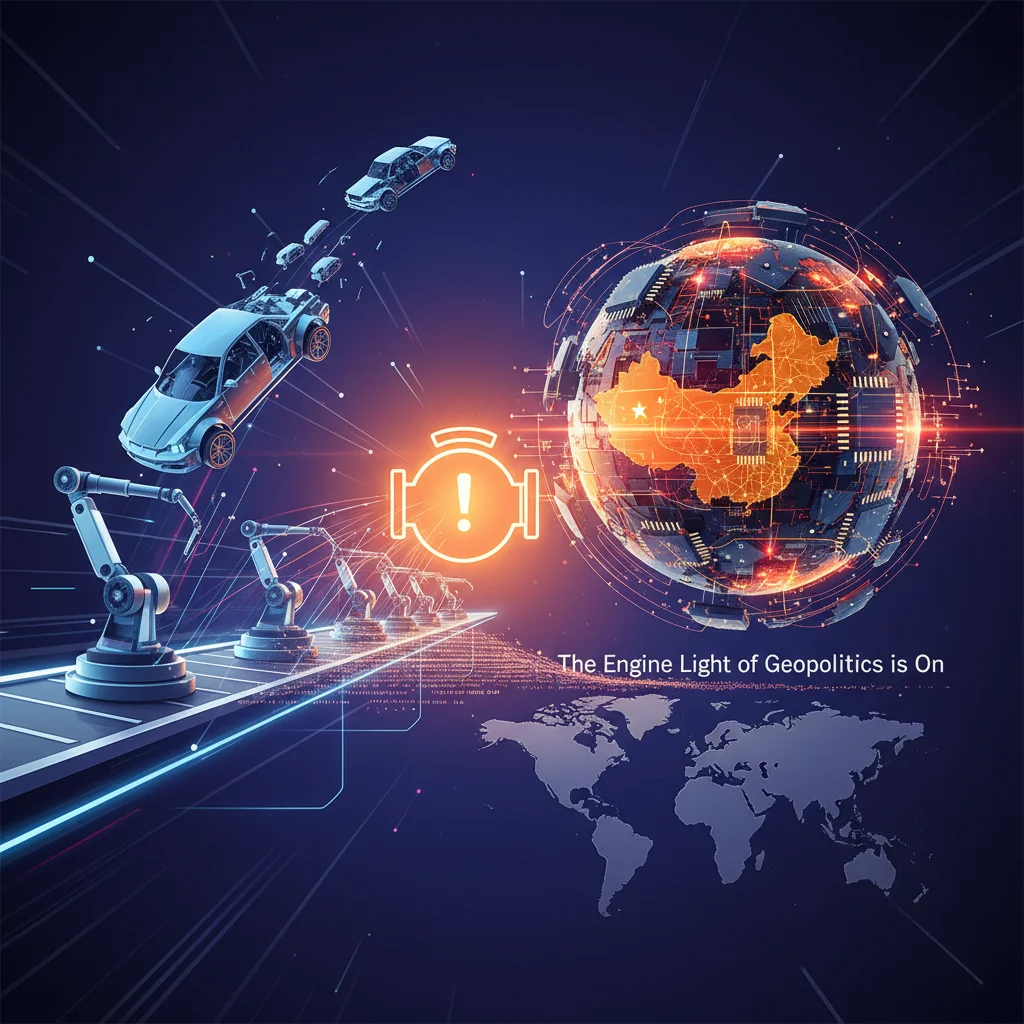
Beyond the Assembly Line: Why China’s Chip Exemption for Carmakers is a High-Stakes Move in the Global AI Race
The Engine Light of Geopolitics is On
In the intricate dance of global trade and technology, even the smallest step can send ripples across the entire stage. Recently, a seemingly minor policy adjustment from Beijing caused a collective sigh of relief in the boardrooms of European car manufacturers. China announced an exemption for certain chips used by carmakers from its new, stringent export curbs on critical semiconductor materials. While the initial news, which noted that a block on these exports had raised fears of production halts in Europe, might seem like a simple supply chain footnote, it’s anything but. This decision is a revealing move in the high-stakes geopolitical chess match over the future of technology, with profound implications for everything from artificial intelligence and automation to global cybersecurity and innovation.
To understand the gravity of this exemption, we must first zoom out. For the past several years, the world has been embroiled in a “chip war,” a quiet but intense conflict for dominance in the semiconductor industry. Semiconductors, or chips, are the silicon brains powering our modern world, from smartphones to data centers running sophisticated machine learning models. The United States, seeking to maintain its technological edge and address national security concerns, has implemented sweeping export controls to limit China’s access to advanced chip-making technology. In response, China has begun to leverage its own dominance in other areas of the supply chain.
This summer, China announced export controls on two key elements, gallium and germanium, which are indispensable for producing high-performance semiconductors. As a dominant global producer of these metals, China’s move was a clear signal: if our access to advanced AI chips is restricted, we can disrupt your access to the fundamental building blocks. According to a Reuters analysis, this created immediate uncertainty for global manufacturers, including those in the automotive sector. It’s within this tense context that the exemption for carmakers arrived, making it far more than a simple trade concession.
More Than a Computer on Wheels: The Modern Car’s Insatiable Appetite for Silicon
Why single out the auto industry? Because the modern car is no longer just a mechanical marvel; it’s a sophisticated, rolling data center. The transition to electric vehicles (EVs) and the rapid integration of Advanced Driver-Assistance Systems (ADAS) have turned cars into one of the most complex consumer electronics products on the market. A single vehicle today can contain over 1,000 individual chips, and that number is only growing as automation and connectivity become standard features.
These aren’t just simple processors. The silicon inside a 2024 model year vehicle performs a dizzying array of tasks, each requiring different types of chips. Understanding this diversity is key to seeing why a targeted exemption was both possible and strategic.
Here’s a simplified breakdown of the critical semiconductor types powering the automotive revolution:
| Chip Category | Primary Function | Examples in a Modern Vehicle |
|---|---|---|
| Microcontrollers (MCUs) | Real-time control of specific systems. | Engine management, power steering, window controls, anti-lock brakes. |
| AI/ML Processors (SoCs) | High-performance computing for complex tasks. | ADAS (lane-keeping, collision avoidance), in-car infotainment, computer vision. |
| Sensors & Analog Chips | Interface with the physical world. | Radar, LiDAR, cameras, tire pressure monitors, battery temperature sensors. |
| Power Management ICs | Regulate and distribute electrical power. | EV battery management systems (BMS), LED lighting, charging circuits. |
The chips most critical for cutting-edge AI applications, like those used for autonomous driving, are at the heart of the US-China tech rivalry. However, a significant portion of the chips in a car are mature, less-advanced MCUs and analog chips—the very components that would be affected by a broad-based mineral export ban. By exempting these, China can protect a vital trade relationship without giving ground on the high-end AI front.
Beyond Big Ben: How London Became the World's Unlikely Quant Trading Superpower
The Ripple Effect: What This Means for Startups, Developers, and the Future of Software
For those of us in the trenches of technology—entrepreneurs, developers, and tech professionals—these geopolitical maneuvers aren’t distant headlines. They have direct consequences on the cost of innovation, the architecture of our products, and the very stability of our industries.
1. The Push for Supply Chain Resilience and “De-Risking”
The era of relying on a single, hyper-efficient global supply chain is over. For startups in the hardware or IoT space, this volatility is a massive challenge. Sourcing components is now a strategic function fraught with geopolitical risk. This is accelerating a trend towards “de-risking” or “friend-shoring,” where companies prioritize sourcing from allied nations, even at a higher cost. We’re already seeing a massive global investment in new semiconductor fabs. The US CHIPS and Science Act, for example, has allocated over $52 billion to bolster domestic manufacturing and R&D, a move mirrored by similar initiatives in the EU and Japan (source). For tech leaders, this means re-evaluating every component’s origin story and building redundancy into their operations.
2. The Ascendancy of Software and Cloud Abstraction
When the hardware layer becomes unpredictable, the software layer must become more adaptable. This is a huge opportunity for software developers and SaaS companies. The goal is to write code that is as hardware-agnostic as possible. In the automotive world, this means creating platforms that can run on different chipsets with minimal re-engineering. This abstraction extends to the cloud. As cars become more connected, they generate petabytes of data used for training machine learning models for autonomous systems, predictive maintenance, and user experience enhancements. A stable, powerful cloud infrastructure is the constant that can absorb some of the shocks from the volatile hardware world.
The Cinema vs. Streaming Showdown: Why Your SaaS Startup Should Be Watching
3. A New Frontier for Cybersecurity
A fragmented supply chain is a playground for security threats. How can a carmaker be certain that a sensor from one country, an MCU from another, and a communications module from a third haven’t been compromised? This elevates the importance of cybersecurity from a feature to a foundational requirement. We’re seeing a rise in demand for “zero-trust” architectures in manufacturing and for sophisticated software-based verification at every stage of assembly and operation. For cybersecurity professionals and startups, securing these complex, multi-origin systems is one of the next great challenges.
Navigating the New Silicon Map
China’s calculated decision to exempt automotive chips is a clear indicator of the new world we operate in. It’s a world where technology, trade, and national security are inextricably linked. The clean lines of globalization have been replaced by a complex, multi-polar map where access to technology and raw materials is wielded as a tool of state power.
For entrepreneurs and innovators, this environment demands a new level of strategic thinking. It’s no longer enough to have a brilliant idea or elegant programming; you must also be a student of geopolitics and a master of supply chain logistics. The companies that will thrive are those that build for resilience, prioritize software adaptability, and embed security into their DNA from day one.
The road ahead for the tech industry, much like the future of the automobile itself, will be defined by its ability to navigate this complex terrain. The exemption may have averted a short-term crisis for car production, but the underlying tensions in the global technology landscape are accelerating. The engine light is still on, and it’s signaling that we all need to pay close attention to the journey ahead.
Europe's Tech Crossroads: Why Building a Better AI, Not Just a Bigger One, Is the Winning Strategy


